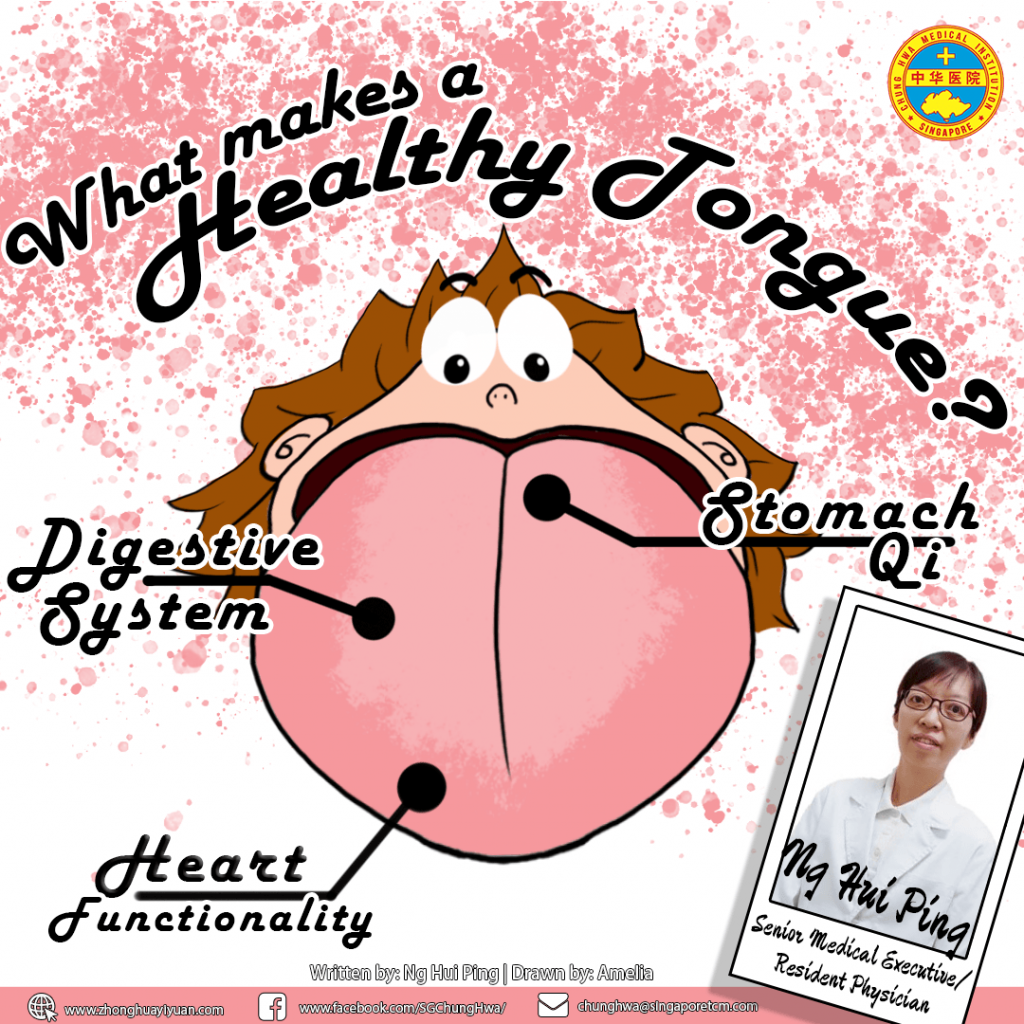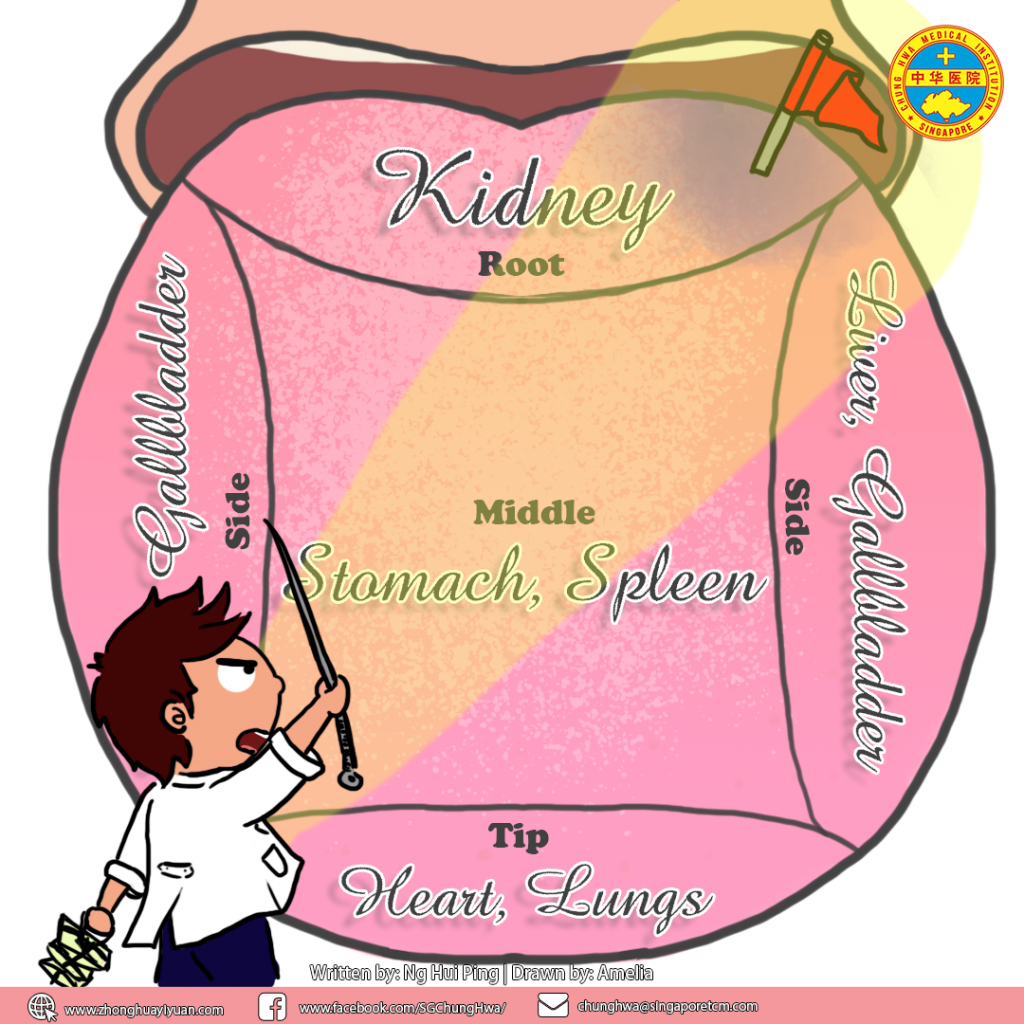Know Your Health From Your Tongue – Part 2
Ng Hui Ping, SCHMI Senior Medical Executive/Resident Physician

The tongue provides a map of the organ systems through the meridian network. The heart has the closest association with the tongue.
According to TCM theories, the Heart has the highest correlation to the tongue. The colour of your tongue will tell us whether your blood and qi are circulating well. When the Heart is well-functioned, the tongue body is light red, moist, soft, and flexible with vitality.
In the TCM point of view, the digestive system includes the stomach and spleen, and their main function is to transform food to nutrients, vital energy, and blood. They then distribute these to all parts of the body, especially demonstrated by the shape and colour of your tongue.
TCM also believes that the tongue coating (a thin, white layer of fur-like substance covering the upper surface of the tongue) is formed from the fumigation of Stomach Qi. Like a piece of fertile land with sufficient water and nutrient, the vegetation can then flourish, it is true too for the tongue coating. When the Stomach Qi and Yin is adequate, the tongue coating would be reflected as a thin white fur like coating around the middle of the tongue. Hence, it is said that the colour, thickness, texture, density of the tongue coating would reflect the pathogenic factors and the pattern of the disease including coldness, heat, deficiency, or repletion.
Moreover, according to TCM theory, the liver, kidneys, and lungs are also connected to the tongue through the meridian network. By observing the various regions on the tongue, we can determine the corresponding diseased organs.

Through the concluding observations from the TCM Physicians in the past dynasties, the Five Organs Classification is commonly used to identify the relationship between the diseases and the tongue. That is, the tip of the tongue corresponds to the Heart and Lungs, the middle portion corresponds to the Spleen and Stomach, the root corresponds to the Kidneys, and sides to Liver and Gallbladder.
Post Views: 1,922